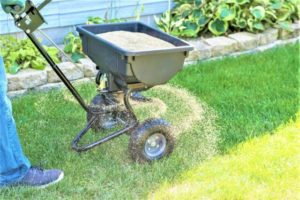
![]()
![]()
![]() Broadleaf Weed Control with Selective Liquid Herbicide – Because we’ve had regular rainfall throughout the summer, we’ve all got lots of weeds in our lawns at this time. Remove them now, at the end of their growing seasons, with an application (whole lawn if you’ve got lots of weeds, spot treatment if you only see a few upon close examination of the whole lawn). By killing all perennial weeds at the end of their respective growing season, you’re eliminating next spring’s weed pests: dandelions, plantain, clover, and many more. Liquid broadleaf weed controls are much more effective than their granular counterparts, which is why we have always recommended liquid over granular weed control. And if you’re planning on seeding this fall, apply your liquid herbicide first, wait 2 weeks, and then seed. Remember to apply when no rain is in the forecast for at least 12 hours and allow 24 hours before mowing the lawn.
Broadleaf Weed Control with Selective Liquid Herbicide – Because we’ve had regular rainfall throughout the summer, we’ve all got lots of weeds in our lawns at this time. Remove them now, at the end of their growing seasons, with an application (whole lawn if you’ve got lots of weeds, spot treatment if you only see a few upon close examination of the whole lawn). By killing all perennial weeds at the end of their respective growing season, you’re eliminating next spring’s weed pests: dandelions, plantain, clover, and many more. Liquid broadleaf weed controls are much more effective than their granular counterparts, which is why we have always recommended liquid over granular weed control. And if you’re planning on seeding this fall, apply your liquid herbicide first, wait 2 weeks, and then seed. Remember to apply when no rain is in the forecast for at least 12 hours and allow 24 hours before mowing the lawn.
Fertilizing Lawns in Late Summer/Early Fall – Lawns haven’t been fed since either early or late spring this year. Due to the rain in July and August they’re exhausted from growth. Coupled with the dry spell in June, many lawns have some turf damage and are in need of being re-invigorated. As we enter the best growing time of the year, fertilization now (early fall), with Lawn Depot heavyweight granular turf food, is essential. More importantly, roots will continue to grow until late fall, thus lawns need to be fertilized again in late fall with Lawn Depot WINTERFEAST root thickening turf food. Lawns that are fed twice in the fall will look better, withstand difficult growing conditions better, and remain healthier than those that do not.
Grub Control in August and September – Grubs are the larval stage of beetles; they live in the soil beneath turf, and feed within the root zone of grass plants in the spring and fall. The most distinctive beetle is the Japanese beetle, which flies during the day and feeds on the foliage of many of our favorite plants. Fortunately, most of us in Bucks and Montgomery Counties have not been plagued by too many Japanese beetles in June and July over the last few years. But this summer we have seen more beetles and fielded more calls from customers seeing an abundance of Japanese beetles. This means that those of you that did not apply preventative grub control (MALLET/MERIT) in the spring/early summer should be scouting for signs of grub damage. If you saw lots of beetles this summer, take notice of sections of your lawn that turn off-color, feel “spongy” under foot or see flocks of birds feeing in your yard. If the turf peels back easily (because the roots have been eaten), and you find more than 8-10 grubs per square foot, you should IMMEDIATELY apply DYLOX granular grub killer and water it in thoroughly. You can begin repair work as soon as the next day, by hard raking or mechanically dethatching or core aerating areas before reseeding. Our recommendation is that it’s better to be safe than sorry: be sure to apply MALLET/MERIT preventative grub control every spring.
Seeding in the Late Summer/Early Fall – It is my very strong opinion (and many others in the turf business) that everyone who cares about his/her lawn, and wants a nice lawn should do at least SOME SEEDING EVERY FALL. Summer heat, insect and/or weed encroachment, and turf disease all tend to thin out healthy lawns over the summer. Fertilizing helps to thicken damaged turf to some extent, but for most of us, overseeding is still the best way to get our lawns thick and lush again going into the winter and next spring. The Lawn Depot sells several mixes and blends of all the top-rated cool season turfgrasses directly from the west coast growers. We offer both quantity discounts as well as loyalty program discounts. And if you are a Turf Management customer you are entitled to 20% off everything that our store offers!
Crabgrass, Japanese Stiltgrass, and Yellow Nutsedge – Crabgrass and Japanese Stiltgrass are both annual grassy weeds (they have already set their seeds for next year; their growth will slow precipitously as the nights cool). They are most easily and most effectively controlled by applying PRE-EMERGENT control products (DIMENSION) in the early spring. Yellow nutsedge is a perennial sedge that only grows actively in warm weather, particularly in wet areas of lawns. Nutsedge has already formed its nutlets at the end of its roots, so treating it or pulling it in September will not accomplish much. Nutsedge should be treated from the time it first starts appearing in lawns and beds with a nutsedge-specific herbicide (sold at the Lawn Depot). Re-apply as new shoots appear through mid-August for best results.
Liming and/or Core Aerating in the Fall – Lime sweetens our naturally acidic soils, which allows fertilizers to work better and thus, grass to thrive. The lime product we recommend and offer at Lawn Depot’s Garden Center is clean and easy to handle, goes through a broadcast spreader easily and isn’t at all dusty. Cal-Turf Pro™ (a fast-acting lime) is applied at 5 lbs./1,000 sq. ft. for maintenance applications or 12 lbs./1,000 sq. ft. to increase pH. Cal-Turf Pro™ is more effective than dolomitic limestone in raising soil pH. It begins to neutralize soil acidity immediately, resulting in soil pH increases that can be measured in weeks rather than months, thus promoting better root development, vigor and growth, as well as drought and stress tolerance.
Core aeration (pulling plugs from the soil) opens up our dense soils, and allows moisture, air and nutrients to enter deeper into the turf’s root zones, thus building deeper, denser root systems and be better able to fight off the effects of stressful weather, insects and diseases. Core aerating prior to overseeding is the best way to loosen soils for improved seed to soil contact and better turfgrass establishment. Core aeration can be done whenever the grass is actively growing and the soil is soft enough to pull at least 2-3” plugs. If you are interested in a quote for core aeration or liming services, feel free to give us a call or request an estimate via our web site.
